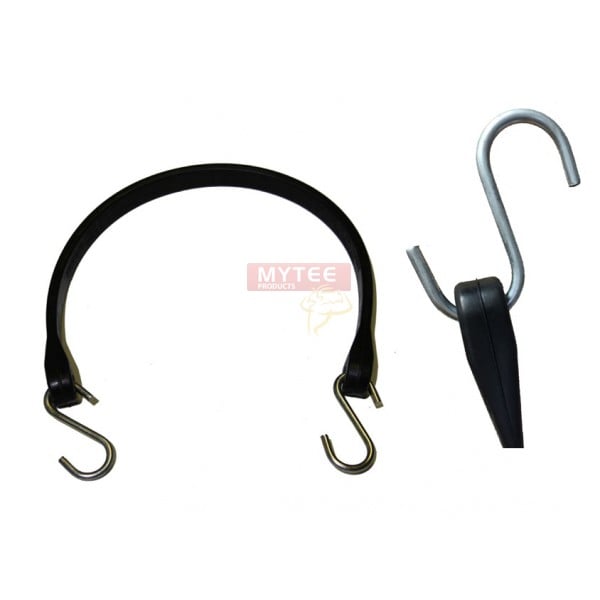Bungee straps have been compared to duct tape in terms of their versatility. Truck drivers use them for everything from securing tarps to replacing a broken curtain rod in the sleeper cab. Their extreme flexibility, resistance to weather, and ease of use, make bungee straps one of the most important tools in the flatbed trucking industry.

Here at Mytee Products, we are thrilled to be able to offer bungee straps in various lengths along with solid core rubber bungee rope. You can purchase straps or rope in bulk to save on our already reasonable prices. And don’t forget replacement hooks; we carry those as well.
Given the popularity and necessity of bungee straps in flatbed trucking, we thought it might be helpful to address some key aspects of using these versatile tools. Below are three things you should never do with bungee straps. Avoiding them will minimize the risks associated with bungee strap use.
1. Shortening Strap by Tying Knots
There are times when the amount of distance between hook points is so short that the average bungee strap is too long. You might think about getting around this by tying a knot or two before deploying a strap. Don’t do it. Tying knots in bungee straps increases the stress on them while at the same time decreasing usable life. It is better to stretch the cord to a different anchor point on the trailer or load.
Bungee straps are designed to evenly distribute tension from end-to-end. When you tie a knot in the middle, that portion involved in the knot is only subject to minimum tension. You can tell just by observing how the strap stretches. The part tied up in the knot barely stretches at all, signifying there is very little energy or tension in the material. The free material on either end stretches more as it absorbs more of the tension and energy.
2. Hooking More Than Two Straps Together
The other side of the knot-tying coin is hooking multiple bungee straps together to create a single chain long enough to span the gap between hook points. We recommend never hooking more than two straps together. Even under tension, the hooks on the ends of bungee straps constitute their weakest link.
Remember that metal ‘S’ hooks do not stretch. To make up for this, bungee straps usually have to be stretched a little further to prevent the sag that results from hooking too many together in a single chain. This creates a safety concern as well as reducing the usable life of all the straps in the chain. If you need length, use bungee rope.
3. Cutting an End and Making a New Hole
Bungee straps wear out and break over time. Sometimes, the hole into which the metal hook is inserted breaks clear through. Do not be tempted by the idea of cutting off the end and making a new hole. Doing so compromises the strength of the strap.
If you look at the average bungee strap, you will notice that the two ends are thicker. They are reinforced with extra rubber material to absorb the additional tension placed on the material by the hook. Cutting off a broken end and making a new hole for the hook results in too much tension on the rubber at the point where the hook is inserted. This is just asking for trouble. Bungee strap altered in this way can easily break without warning.
Bungee straps are an invaluable tool for the flatbed trucker. Used correctly, they offer a tremendous amount of functionality and flexibility.









